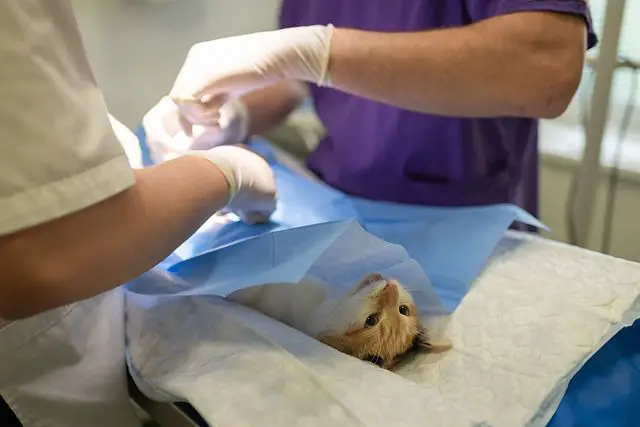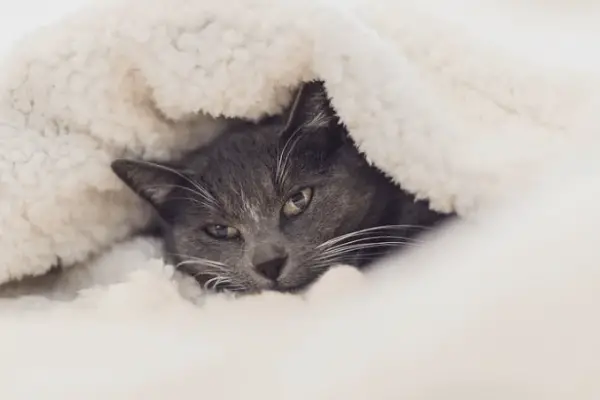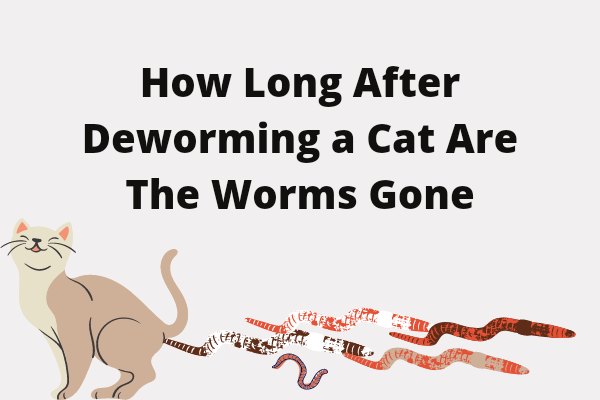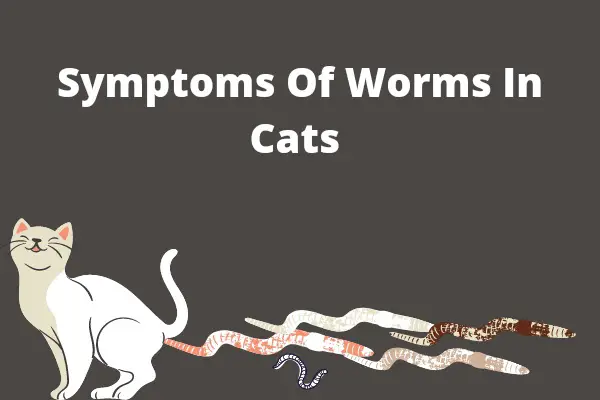Does My Cat Have Worms: Preventions, 11 Symptoms & Treatments
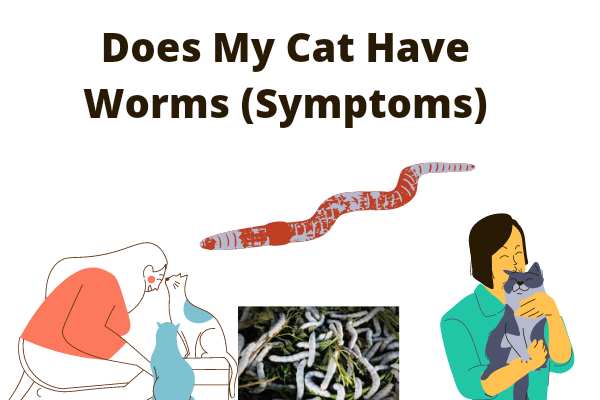
Cat owners always ask does my cat have worms, this question comes up when you start observing funny signs in your cat, keep reading to find the symptoms of worms in the cat, and how to fix your cat.
Worms are common parasites that can be found in cats. There are many different types of worms that affect cats, but the most common are roundworms and tapeworms.
Have you noticed your cat’s litter box is not as clean as it used to be? Does your cat seem to have a lot of dandruff? If so, this could be a sign that your cat has worms.
The good news is, finding out if your cat has worms can be easy and painless.
The first thing you should do is perform a visual inspection of your cat’s litter box by looking for signs of parasites like whipworms, tapeworms, or roundworms.
You can also perform a quick check by examining the back end of the animal. These are some common signs that indicate that your pet might have worms.
Keep reading to learn more about these pesky parasites and how you can keep your cat healthy with worm prevention.
Does My Cat Have Worms
Cats often show symptoms of worms like scratching and licking themselves excessively, passing worms in their stool, having a potbelly, looking soft and unkempt, sudden weight loss, diarrhea, vomiting, appetite loss, and unable to jump up onto high places.
If you notice any of these symptoms in your cats, take them to the vet immediately.
Types of worms found in cats
Here are the basic and common types of worms found in cats:
Roundworms
When a kitten is afflicted with a significant number of roundworms, the worms can impede the kitten’s development, cause major digestive distress, and create excessive gas production. These kittens frequently have a ‘pot-bellied’ look.
In the intestines, roundworms are free-living. Roundworms do not require an intermediate host to transfer from cat to cat, but they can be disseminated by eating the eggs left in the feces of an infected cat.
Adult roundworms are 3 to 5 inches long and can be seen in the feces of cats. Cats can get roundworms by eating rodents that have larvae in their tissues or by consuming roundworm eggs.
Roundworms, like hookworms, can be harmful not just to your cat but also to you. Both species of worms are zoonotic, which means they may infect both people and pets.
Tapeworms
Tapeworms are long, flat worms with a large number of segments. The tapeworm’s mature segments, which contain eggs, are discharged and passed in the feces.
These segments, which resemble rice grains, can be found in the cat’s fur near the anus, in the feces, and on the cat’s bed.
They hook onto the lining of the cat’s intestines and grow long ribbon-like bodies, the ends of which break off and exit the backchannel as egg sacs.
Older cats, especially those who hunt or are frequently infested with fleas, are significantly more susceptible to these worms.
A tapeworm’s life cycle includes a second intermediate “host,” which can be a flea or (as with roundworms) a small animal like a mouse.
Hookworms
Hookworms attach themselves to the lining of a cat’s intestine. Hookworm eggs pass through the digestive system of cats and are expelled in their feces.
Larvae develop from these eggs. The larvae can be swallowed during grooming or enter your cat through the bottom of their feet since they dwell in the soil.
Hookworms are among the most common intestinal parasites in cats. The hookworm is around 12 to 1 inch (1-2 cm) long.
It adheres to the small intestine’s lining and feeds on blood. Hookworms can cause severe anemia in infected cats as a result of sucking blood.
Infectious larvae can enter the host through the mouth or the skin, especially the feet.
Whipworms
Cats’ intestines can be infected, although the Companion Animal Parasite Council says this happens infrequently in North America. Tropical areas have a higher prevalence of feline whipworms.
Symptoms of worms in cats
Take your cat to the clinic for a fecal test and to discuss starting a deworming therapy with your veterinarian if you believe your cat has worms.
Dewormers for cats are available in two forms: topically and orally.
The following are some of the most frequent worm infection symptoms in cats:
- Rapid weight loss
- Swollen belly
- Mucus or blood in feces
- Worms in feces
- Anemia
- Continues diarrhea
- Sudden decreased in activity
- Signs of heart failure
- Persistent vomiting
- Regular coughing
- Dull fur
- Sudden loss of appetite
Symptoms of roundworms in cats
As the name implies, these are long and circular, resembling spaghetti but with a pointy end.
Roundworm eggs are so tiny that they aren’t visible to the human eye, and you’d never know they were there if they were passed out in your cat’s feces.
Here are some common symptoms of roundworms associated with cats:
- Intestinal obstruction
- Weight loss
- Distended abdomen
- Lack of energy or lethargy
- Coughing
- Vomiting
- Diarrhea
Symptoms of tapeworms in cats
Tapeworm segments, unlike roundworm eggs, are clearly visible in feces with the human eye.
Tapeworms have long, cream-colored ribbon-like bodies, and their egg sacs are frequently deposited in cat feces, which resemble rice grains.
The worms feed on the nutrients in your cat’s stomach and cause some serious health challenges.
Here are some common symptoms of tapeworms associated with cats:
- Vomiting
- Weight loss
- Overly cleaning or washing the area around its bottom.
- Presence in the cat feces
- Attached to the fur around the anal area of the cat
- Increased appetite
Symptoms of hookworms in cats
Hookworms are less prevalent than tapeworms and roundworms, but they should be avoided by pet owners.
They feed on the cat’s blood through the small intestine, which can cause anemia. They can be deadly in severe situations, especially in kittens.
Adult cats may have some tolerance to hookworm if they’ve been exposed to the parasite before, so they don’t display any signs.
- Weight loss
- Anemia
- Abdominal pain
- Diarrhea
- Pale lips and gums
- Coughing
- Skin lesions
- Sudden collapse
- Lethargy
Diagnosing of worms in cats
Your veterinarian will do a comprehensive examination of your cat and obtain a full medical history from you.
Worm infestation will not be seen in the majority of healthy animals.
Roundworms, tapeworms, and hookworms may be seen in kittens who have a high worm load.
In severe cases, they may acquire a pot belly due to a huge quantity of worms.
Microscopic stool inspection is the most frequent technique to identify worms.
however, a single fecal test might be misleading since eggs are not always discharged into the feces.
Broad-spectrum dewormers are commonly used in cases when intestinal worms are highly suspected, and it is also acceptable to deworm cats who go outside and hunt on a regular basis.
How to prevent worms in cats
Because parasite treatment isn’t covered by pet insurance, it’s best to get started as soon as possible.
In order to control intestinal parasites and avoid reinfections, good hygiene is required.
This includes daily feces’ removal, frequent litter box disinfection, reducing overcrowding, avoiding raw meat diets, and managing intermediate hosts (fleas and rodents).
Here are a few typical methods for keeping worms away from your cat:
- Vaccinating your cat is a good idea.
- Remove all of the tiny shrubs from surrounding your house.
- Cleaning and disinfecting your home
- Don’t wear the same shoes you wore to work into the house.
- Bring no dangerous dogs into the house.
- Make your home cat-proof.
- Close all possible mouse entry points.
- Medical examinations on a regular basis
- Warm water should be used to bathe your cat.
- Maintain the cleanliness of your cat’s litter box.
- Allowing your cat to enter a filthy garden is not a good idea.
- Groom your cat on a regular basis.
- Antibiotics may only be obtained with the permission of a veterinarian.
- Anti-parasite cream or spray is available.
- Get your cat a secure scratching post.
Treatment of worms in cats
If your cat gets worms, there are a variety of simple and effective treatments available; talk to your veterinarian about which product is best for your cat.
Although worming should be done on a regular basis regardless of symptoms as a preventive measure, the condition’s treatment will be dependent in part on the veterinarian’s diagnosis.
Treatments that can be administered at home include:
- Tablets
- Powders
- Pastes
- Spot-on treatments
Because the frequency of use varies per product, it’s a good idea to mark your calendar with reminders, so you don’t forget when the next treatment is due.
Some of the pills, powders, and pastes can be combined with cat food or treats, while others must be given directly to the cat’s mouth; read the recommendations carefully again.
Your veterinarian or a veterinary nurse at your clinic may be able to assist you if you are unsure about giving a worming medicine.
Pyrantel, pamoate, fenbendazole, and praziquantel for tapeworms are some of the most popular medicines, according to insiders.
It is essential to undergo a fecal test to identify the worm so that the optimum treatment may be chosen.
How do cats get worms
Cats can obtain worms from feces because worms can be discovered in cat feces and can be passed to other cats, humans, or pets.
Cats can also catch worms through infected soil or food, unkept litter boxes, unkept gardens, other diseased pets, infected rodents, or drinking polluted water.
Here is a detailed article on the 14 common ways indoor cats get worms.
Can I contact worms from my cat
Intestinal worms can be contracted in a variety of ways, including eating the worm’s eggs or larva or coming into touch with contaminated soil, food, water, or other individuals.
Roundworms and tapeworms are the most common intestinal parasites in cats, and they’re the most likely to infect people by unintended ingestion of infective worm eggs carried in the cat’s feces, licking a worm-infected cat, or eating worm-infected food left in the environment by cats.
Here is a more detailed article on ways you can contract worms from your cat.


